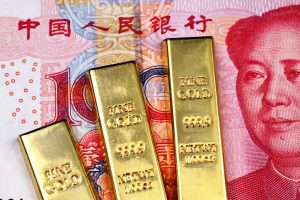Is China Buying up Gold in a Bid to De-Dollarize?
The comments below are an edited and abridged synopsis of an article by Anuradha Garg
China added another 10.3 tons of gold to its reserves in June, marking the 7th consecutive month of gold additions. Through the 6 months ending in May, it added 74 tons to reserves.

Amid the ongoing trade war, China is trying to diversify away from the US dollar. China’s holdings of US Treasuries fell for the 2nd straight month in April to $1.113 trillion, the lowest level in almost 2 years.
The de-dollarization trend is visible not only in China’s foreign reserves, but also in Russia’s. Russia has remained a sustained buyer of gold. It bought six tons of gold in May, bringing its total gold reserves to 2,183 tons. In the first five months of the year, it bought 78 tons of gold.
Last week, Poland’s central bank announced that it had bought 95 tons of gold in June, taking its gold purchases in 2019 to 100 tons. Poland is building gold reserves to strengthen its financial security.
In 2018, global central banks purchased 651.5 tons of gold, the second-highest total on record. The central banks of Russia, Turkey and Kazakhstan led the pack, accounting for 58% of total central bank demand in 2018. Russia purchased the most gold on record at 274.3 tons during the year. These purchases were mostly funded by the sale of US Treasuries. Russia is in the process of de-dollarization by selling US Treasuries and buying gold instead.
Many analysts have turned bullish on gold, in part due to increased central bank buying. Goldman Sachs believes that the countries that have geopolitical tensions with the US are buying gold in large quantities.
Central banks’ increasing gold reserves is a good omen for the gold price. Given rising trade tensions and other geopolitical uncertainties, countries—especially China and Russia—are expected to keep adding to their gold reserves. It’s also noteworthy that these two countries’ gold reserves as a proportion of their total reserves are still far below the reserves of developed countries such as the US, France and Italy.

